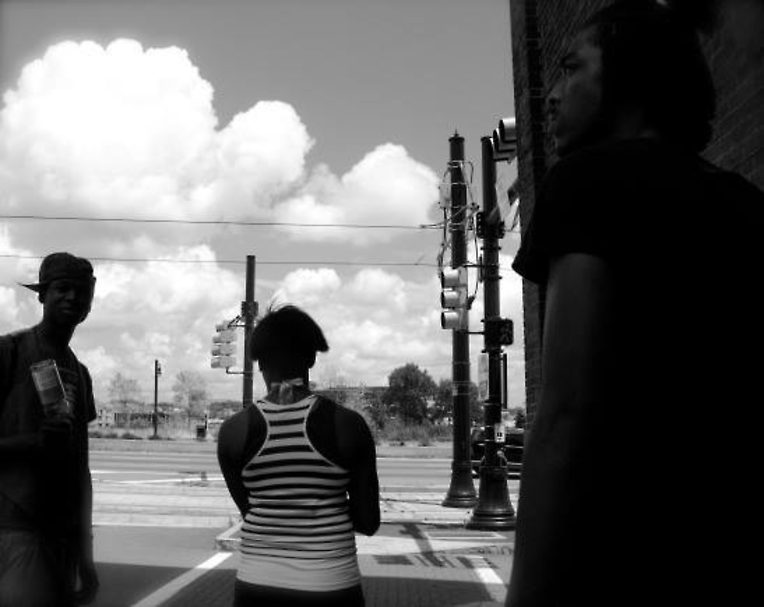The Choreography of Survival
From the Series: #BlackLivesMatter: Anti-Black Racism, Police Violence, and Resistance
From the Series: #BlackLivesMatter: Anti-Black Racism, Police Violence, and Resistance


Starting in the late summer of 2014, we have witnessed what some are calling a new form of protest, staged by an intergenerational and interracial populace intent on challenging the status quo of state violence in the United States. Images of large numbers of people in the streets with megaphones and signs, chanting slogans and demanding answers and retribution, are not new. Yet there is something about this moment of protest and the activism it evidences that calls us to reconsider not only how policing occurs, but also how young people, in particular, understand their relationship to the state.
Social media allows millennial activists to organize protests within minutes. Information is both disseminated and critiqued with incredible rapidity. Thus, the image of Michael Brown’s 18-year-old body lying for over four hours in the middle of the street where he was fatally shot becomes the lightning rod for a national movement. The ability to see murdered bodies minutes after they have fallen, hear audio of the victims and perpetrators seconds before their encounter, and respond to mobilizations as soon as the online call is made transforms the killings of Michael Brown, Trayvon Martin, and Eric Garner into singular, galvanizing events. At the same time, the specter of violence leveled by the state is all too mundane for many young Black people living in the United States.
Photographs and video footage have captured young Black women, many of whom are in their late teens and early twenties, on the front lines of protests or leading teach-ins and mobilizations in their communities. While the leadership of young Black women has gained a certain level of mainstream visibility, this new focus belies the fact that young Black women have historically been at the forefront of such activities, as initiators of conversations meant to protect the interests and lives of all who claim membership in their communities. My ethnographic research on race, gender, and citizenship in the United States focuses on the ways in which young people of color manage their lives in underresourced, overly policed environments. In more than a decade of research with young Black women in Detroit and high-school-age Black girls in Newark, I have seen how young women take strategic action to protect these cities and the people who call them home, even as this protection is not always reciprocated. For example, the young women residents of a homeless shelter in Detroit confronted issues such as the crisis in public education, a lack of safe and reliable public transportation, and corruption in city and state government with community-based workshops and street theater events. These events provided new forums for Detroiters to identify possible ways of addressing the most debilitating challenges to the vitality and well-being of their community.
In Newark, concerns about the dangers they encountered while traveling to school and work prompted high-school-age girls to interview other Black girls and women about their relationships to the city. The interview transcripts then became the foundation for a performance project that explored how the intersection of race, gender, age, and class influences the ways in which Black women enact community and move through the city. A new understanding of this conscious choreography provided the girls and their community with the ability to experience the urban environment as more than stress, threat, aggression, or violence. In both Detroit and Newark, the young women at the center of these creative political initiatives openly expressed their desire to renarrate racialized neighborhoods marked in the media as areas of crime and destitution as homespaces. In homespaces, an ethos of civic accountability and genuine care is more real and felt than the highly visible acts of violence with which their communities are associated.
In November 2014, I traveled to Missouri to give thanks for the thoughtfully courageous work of young activists who had been active in their community long before anyone was talking about Ferguson or the tragic death of a young man named Mike Brown. There, too, young Black women talked about efforts to support and educate their neighbors that they have been spearheading for years—efforts that will continue well after the names of recently murdered youth have dropped out of conversation and moved to the growing archive of young Black men and women killed under the guise of safety and protection.
The linear and ahistorical narrative of Black activism and protest in the United States is obsessed with identifying singular, usually male leaders responsible for inspiring collective action. A more rigorous and accurate retelling of history, however, points to the actions taken by Black women, many of them young, who established a foundation that supported the highly visible events embedded in popular consciousness as our protest history. This history has shaped our active present and will inevitably transform how we understand future steps toward greater equity and justice. The way we discuss the past, understand the present, and plan for future social transformation must be grounded in a recognition of young Black women’s everyday choreography of survival—the quotidian practices that form the foundation of those overly publicized and hypertelevised protest moments that are impossible to ignore.
Aimee Meredith Cox is a cultural anthropologist and Assistant Professor of African and African American Studies at Fordham University.